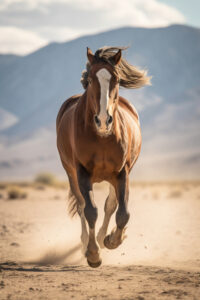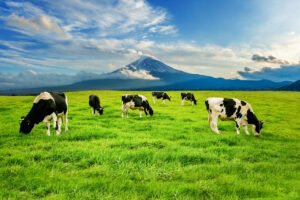A Vital Part of Agriculture and Culture
The Cow: A Vital Part of Agriculture and Culture
Cows, scientifically known as Bos taurus, are one of the most important domesticated animals in human history. Revered in many cultures and essential to agriculture, cows provide a multitude of resources and services that have shaped societies around the world.
Physical Characteristics
Cows are large, sturdy animals with a robust build, typically weighing between 1,000 and 1,800 pounds. They have a distinct body structure with a broad, barrel-shaped torso, long legs, and a large head featuring two prominent horns (though many breeds are naturally polled, meaning they lack horns). Their coats can vary widely in color, including shades of black, brown, and white, often exhibiting unique patterns.
Importance in Agriculture
- Dairy Production: Cows are perhaps best known for their milk, which is a staple in many diets globally. Dairy cows are bred specifically for their ability to produce large quantities of milk, and their products—such as cheese, yogurt, and butter—are integral to numerous culinary traditions.
- Beef Production: Cattle are also raised for meat. Beef is a major source of protein for many cultures, and different cuts of meat provide diverse culinary options. The beef industry is a significant part of the agricultural economy in many countries.
- Labor and Draft Animals: In various regions, especially in developing countries, cows are used as draft animals to plow fields and transport goods. Their strength and endurance make them invaluable for traditional farming practices.
- Manure for Fertilization: Cow dung is often used as a natural fertilizer, enriching the soil and enhancing agricultural productivity. In some cultures, it is also used as a fuel source or for construction.
Cultural Significance
Cows hold substantial cultural and religious significance in many societies. In Hinduism, for instance, cows are considered sacred and are revered as symbols of wealth, strength, and motherly nurturing. The protection of cows is an important aspect of cultural identity in India, leading to legal protections in various states.
In Western cultures, cows often represent pastoral beauty and the rural way of life. They are featured prominently in art, literature, and folklore, symbolizing abundance and the connection between humans and nature.
Environmental Impact
While cows are crucial for agriculture, their farming practices can have significant environmental consequences. The production of methane—a potent greenhouse gas—through enteric fermentation during digestion is a major concern. Additionally, large-scale cattle farming can lead to deforestation, loss of biodiversity, and water pollution. As awareness of climate change grows, sustainable practices in cattle farming are becoming increasingly important.
Conclusion
Cows are more than just livestock; they are integral to our agricultural systems and cultural practices. Understanding their role helps us appreciate the complex relationship between humans and animals, as well as the challenges and responsibilities that come with domestication. As we move forward, balancing the needs of agriculture, the environment, and cultural values will be essential in ensuring a sustainable future for cattle farming














Post Comment